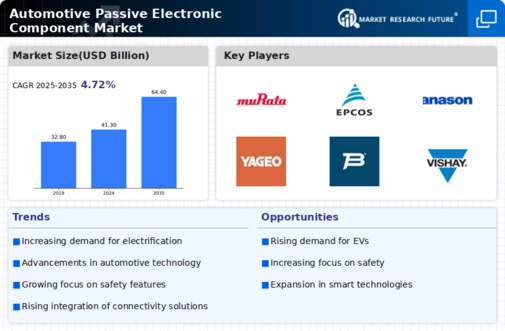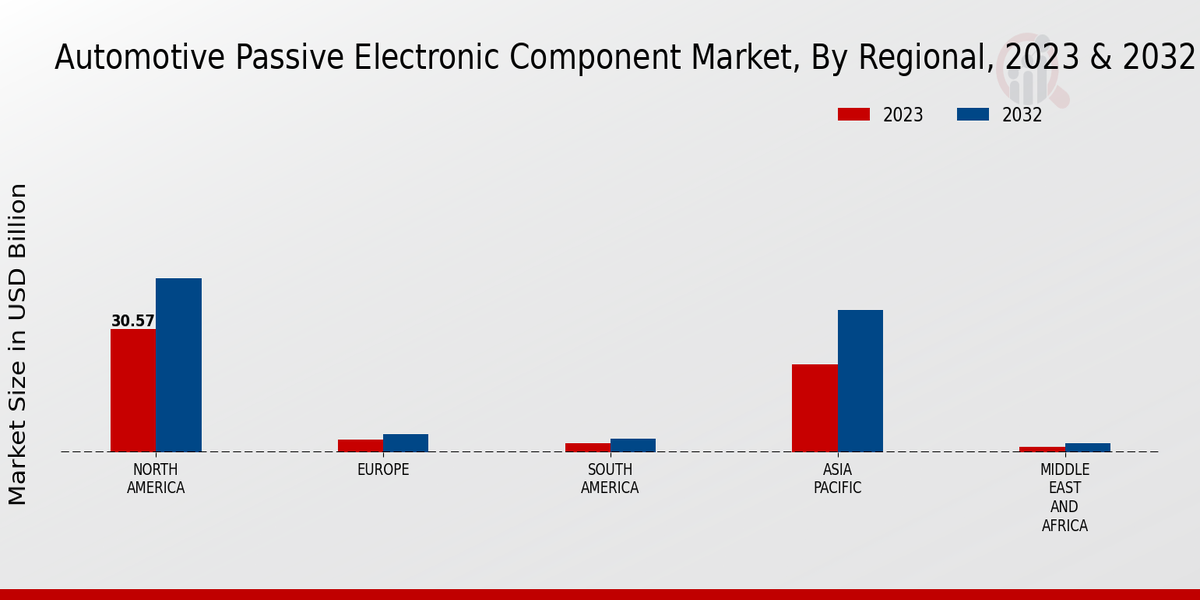Market Growth Projections
Global Supply Chain Dynamics
Global supply chain dynamics are crucial in shaping the Global Automotive Passive Electronic Component Market Industry. The interconnectedness of global markets means that fluctuations in supply chains can significantly impact component availability and pricing. Factors such as geopolitical tensions, trade policies, and raw material availability can create challenges for manufacturers. However, these dynamics also present opportunities for innovation in sourcing and production strategies. As companies adapt to these changes, the market is likely to experience shifts in component sourcing and manufacturing practices, influencing overall market growth.
Growing Demand for Electric Vehicles
The increasing adoption of electric vehicles (EVs) is a primary driver for the Global Automotive Passive Electronic Component Market Industry. As automakers pivot towards electrification, the demand for passive components such as capacitors and resistors rises significantly. In 2024, the market is projected to reach 41.3 USD Billion, largely fueled by the need for efficient energy storage and management systems in EVs. The trend towards sustainability and reduced emissions further propels this demand, as manufacturers seek to enhance vehicle performance while adhering to stringent regulatory standards. This shift is expected to continue, with the market anticipated to grow at a CAGR of 4.13% from 2025 to 2035.
Rising Consumer Electronics Integration
The integration of consumer electronics into vehicles is significantly influencing the Global Automotive Passive Electronic Component Market Industry. As consumers demand more connectivity and entertainment options, automotive manufacturers are increasingly incorporating advanced electronic systems. This trend necessitates a variety of passive components, including capacitors and inductors, to support functionalities such as audio systems, navigation, and connectivity features. The growing expectation for seamless integration of technology in vehicles is likely to drive the market further, as manufacturers seek to enhance user experience while maintaining vehicle performance and safety.
Regulatory Compliance and Safety Standards
Regulatory compliance and safety standards play a pivotal role in driving the Global Automotive Passive Electronic Component Market Industry. Governments worldwide are implementing stringent regulations to enhance vehicle safety and environmental sustainability. This necessitates the incorporation of reliable passive components that meet these standards. For instance, components used in braking systems and airbag deployments must adhere to rigorous testing protocols. As manufacturers strive to comply with these regulations, the demand for high-quality passive electronic components is expected to rise. This trend not only supports market growth but also encourages innovation in component design and manufacturing processes.
Technological Advancements in Automotive Electronics
Technological innovations in automotive electronics are reshaping the Global Automotive Passive Electronic Component Market Industry. The integration of advanced driver-assistance systems (ADAS) and infotainment technologies necessitates the use of high-performance passive components. These components are crucial for ensuring reliability and efficiency in complex electronic systems. As vehicles become increasingly connected and automated, the demand for sophisticated passive components is likely to surge. The market's growth trajectory indicates that by 2035, it could reach 64.4 USD Billion, reflecting the industry's response to evolving consumer preferences and technological advancements.






















